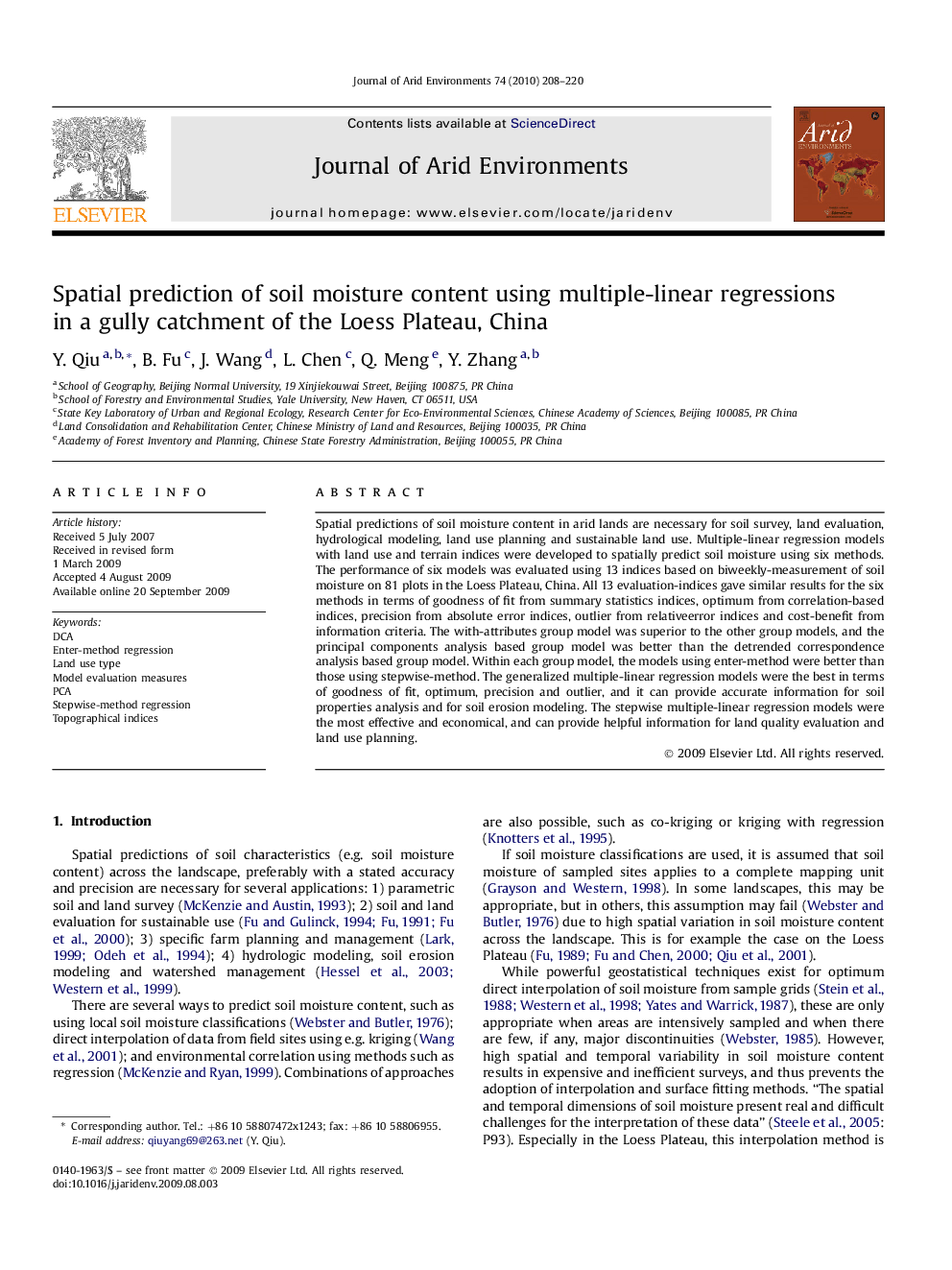| Article ID | Journal | Published Year | Pages | File Type |
|---|---|---|---|---|
| 4393901 | Journal of Arid Environments | 2010 | 13 Pages |
Spatial predictions of soil moisture content in arid lands are necessary for soil survey, land evaluation, hydrological modeling, land use planning and sustainable land use. Multiple-linear regression models with land use and terrain indices were developed to spatially predict soil moisture using six methods. The performance of six models was evaluated using 13 indices based on biweekly-measurement of soil moisture on 81 plots in the Loess Plateau, China. All 13 evaluation-indices gave similar results for the six methods in terms of goodness of fit from summary statistics indices, optimum from correlation-based indices, precision from absolute error indices, outlier from relativeerror indices and cost-benefit from information criteria. The with-attributes group model was superior to the other group models, and the principal components analysis based group model was better than the detrended correspondence analysis based group model. Within each group model, the models using enter-method were better than those using stepwise-method. The generalized multiple-linear regression models were the best in terms of goodness of fit, optimum, precision and outlier, and it can provide accurate information for soil properties analysis and for soil erosion modeling. The stepwise multiple-linear regression models were the most effective and economical, and can provide helpful information for land quality evaluation and land use planning.
